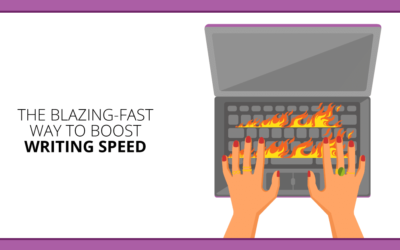What are your freelance writing rates?
It’s the forever-and-always number one question that floats around the freelance writer sphere: “What would you charge for…”
Whether it’s asked by a prospective client or by another writer, pricing freelance writing rates are continually a tripping point you can get stuck on.
- How much should I charge for that?
- Am I charging too much?
- Are my rates too low?
- If I asked for more money, will I still land the assignment?
- What’s the going rate for this type of work?
If you’ve ever worked yourself into a frenzy over these questions, you’re not alone.
Setting your freelance writing rates for 2021 can be a complicated exercise, unless you have a guide that maps out the process by the project.
But a pricing guide to freelance writing rates isn’t a magic wand; it’s a tool to use along with your:
- Own experience
- Client type
- Thoughts about how you like to price the work
It’s the bowling-alley bumpers to ensure that you’re pricing within typical going rates, but also pushing yourself a bit beyond your comfort zone when it’s time to raise your freelance writing rates.
Looking for the definitive guide to setting freelance writing rates in 2021? You’re in the right place.
But before we detail the step-by-step on using a pricing guide to its max capacity, there’s a few things you need to know:
1. Don’t ask platform people their opinion on freelance writing rates
If you have freelance writer friends on Fiverr or UpWork or one of the millions of other platforms out there where you have to bid against many others for work, they’re not your best source of info.
Why? There’s a couple reasons for this:
- They’re bidding based on criteria that’s not in the live market.
- It’s all platform specific and unfortunately, low on the pricing scale.
- They’re bidding on a project without the full scope of work or talking to the client.
Get more project info to set freelance writing rates
Over my almost decade of freelance writing, I’ve come to learn that you can’t accurately understand the depth of a project until you:
- Speak to the client
- Iron out all their ideas
- Match those to their scope of work
Oftentimes, what they think is the scope of work isn’t always 100 percent of the work that you do.
- Are you speaking to those writers who price without full information to set your freelance writing rates?
- Or maybe you’re setting your rates without getting the entire picture directly from your client?
Don’t do this, OK.
You’re not only losing money this way, you’re losing a feeling for what the work is worth within the real market outside of the platform.
2. Do seek out freelance writers who earn well and have been in the game
This sounds obvious, but it can be hard to identify high-earning freelancers when your current pool of comrades are struggling just like you.
Here are some thing you can do to find experienced writers to model:
- Use LinkedIn. Look through freelance writer profiles on LinkedIn
- Search Google for freelance writers. Check out writer websites in your area to see if they’ve worked for top-level clients
- Set some parameters. Look for writers who have been around for several years, and have wonderful clips.
- If you see something that impresses you, from articles to clients to testimonials, chances are that freelance writer is doing something right. And a writer you may want to model.
Surround yourself with great writers to help you price your work
What you want for pricing info is to be around the groups that are pricing at the highest level.
Why? They’re the ones who are pushing the boundaries and adding value while charging what the work is worth.
Pricing advice from those freelancers who’ve worked with dozens and dozens of clients, rode the ups and downs that come with a freelance business, and understand the nuances between projects and why they’re worth different amounts are your golden ticket to a better freelance life.
3. Prospect ID and using a pricing guide
When you have a pricing guide, it’s pretty easy to identify which prospects are worth taking a call with and which aren’t.
The low-ball client
If you look at the guide and every rate the potential client quoted to you is lower than the listed minimum, they’re not a good fit for a freelance writer. Their rates are more in-line with what you’d see on one of the many platforms, and are looking more for price than quality when it comes to selecting a writer.
The client with a budget to pay pro rates
However, if you have a potential client that’s mentioned their budget is within the revenue ranges listed in the guide, now it’s more about figuring out what the piece is worth in terms of value and effort. So how do you figure that out?
Ask more questions about their project like:
- Is the piece something that’s going to be used over and over again in their marketing to bring in leads or grow their email list?
- Are you writing a sales page or email drip campaign that could easily lead to thousands of dollars of income for them?
- Or is it more that they need continual quality content that could range from a basic blog post to something that resembles a magazine-worthy article with interviews and research?
Identifying the prospect, their budget and needs, the specific details of the project, and what the outcome is for the work should all factor into your pricing for each project.
4. How to use a pricing guide to expand your freelance writing career
Here’s the fun part: when you have a pricing guide that’s constantly updated with real-world rates collected from dozens of writers, you can price with confidence while growing your writing business and income.
- I spent years collecting rates from my freelance writer friends and writer groups to create my pricing guide, and the work is still ongoing.
- I’m always asking what writers are charging, what the project scope was, and if anyone is doing any new types of writing projects to ensure that the information is as on point as possible.
- How useful is a pricing guide if it’s not keeping up with what current writers with high incomes are charging?
But that doesn’t mean your freelance writing rates are a set-it-and-forget it deal…
- Any pricing guide has to combine your own thoughts and experience.
- You have to use your brain to figure out where in the range the work falls.
- This not only ensures you’re pricing based on the specific project, but that what you’re charging your client is fair and accurate.
Here’s a few things to consider to set your freelance writing rates:
- How many years have you been writing?
- How much experience do you have in that prospective client’s niche?
- How complex is the project (research, interviews, writing, audio/video, editing, etc.)?
- How much value does the project deliver to the client?
- How many times have you done similar types of projects?
The guide is what you use while considering these questions, then applying the ballparking pricing to the work.
There’s no one-size-fits-all solution to pricing your work
Many times, I’ve gotten notes from writers who want more specific pricing ranges for new, mid-level, and experienced freelance writers rather than ballpark numbers.
But I don’t feel narrowing it down helps when thinking about the questions above.
- It’s more like fencing them in saying: “I’m a mid-level writer so I must be in this small range.”
Instead, you should be looking at the project, applying the guide, evaluating your experience and expertise, thinking about the value of the project, and then what you’d like to set your rate at…hopefully, at a number that makes you slightly uncomfortable.
That’s how you know you’re in the right arena.
Don’t limit yourself and your earning potential by not thinking through all the factors that influence pricing.
5. When you need a client…real bad
There are times, though, that we’ve all had where we must consider how badly we need a client.
If we’re in a pinch or still riding the feast-or-famine train, sometimes we may go below what we’d like to get paid to get a project.
That ever happen to you?
Let me be clear, however: we’re not going below our price floor, but below our ideal rate.
When you have to pay your bills to keep a roof over your head and kibbles in dog bowls, sometimes that means taking a rate lower than what you’d ideally like.
That’s ok! It happens and as small business owners we have to make tough choices like that.
Before you quote a project, consult your pricing guide
But we still have the pricing guide to show us what a good, acceptable freelance writer rate is and what is well below minimum.
You can still use the guide to see if it makes sense to take a slightly lower-paid gig that’s still within the ballpark ranges. The key is to ensure that the pricing is still fair for the work and not egregiously low.
6. The #1 and #2 rules
- Keep raising your rates until you get no takers
- Keep raising the complexity and types of projects you’ll accept
One of the major ways to earn more as you gain experience and write better is to raise your freelance writing rates until every prospective client you talk to either:
- Says it’s above their budget OR tries to negotiate down
These prospective clients should be the cream of the crop in your niche and have enough revenue to pay writers well. But you should also be providing enough value with your work and have enough experience under your belt to charge what you’d like to charge.
Once you hit that high note on rates for certain projects, move on to:
- Strategy
- Consulting
- Marketing
- Projects like white paper writing, case studies, and ebooks that are detailed and take more than a week to complete
When you up the number of deliverables and how hard they are to complete, it helps you raise your rates. But it also helps grow your income and experience with each project.
Plus, if you’re able to take on more complex projects, you have less churn-and-burn work and more complicated pieces that show your writing chops to your clients.
7. Pricing guides are tools…not mindless manuals
Although a fantastic pricing guide gives you real-time ballpark numbers, it’s not a do-this-or-you’ll-fail doc or “easy button.” You have to:
- Use it as a set of guidelines to inform how you price your projects for value instead of hours spent or energy put in.
- Refer to it as tool that gives you current going rates, but also encourages you to stretch yourself based on your own:
- Writing experience
- Value and intricacy of the project
- Where you’d like to be in terms of income
- Hang around other freelance writers who make good money. Do this, and chances are you’ll earn well, too. But you’ll also have the chance to bounce off rates from the guide with them.
- Look for opportunities to add new projects to your repertoire that are more interesting than what you’ve been doing and have a higher value.
- Be able to adapt to changes when the writing landscape creates a new need in your niche…you can use the guide to inform how to price that new project type.
Set your freelance writing rates to help you make a living writing
The goal is always to use your guide to freelance writing rates as part of the pricing equation. As you go into 2021, remember that there’s more than a number and project type that goes into pricing.
Don’t get tripped up every time you’re asked for a proposal or want to raise your rates.
Make an informed decision based on years of data, plus what you bring to the table as a writer, and you’ll be paying your bills with your freelance income in no time.
Need help setting your freelance writing rates in 2021? Share your ideas in the comments below.
Mandy Ellis is an Austin-based freelance writer, content marketing strategist, and writing coach.











